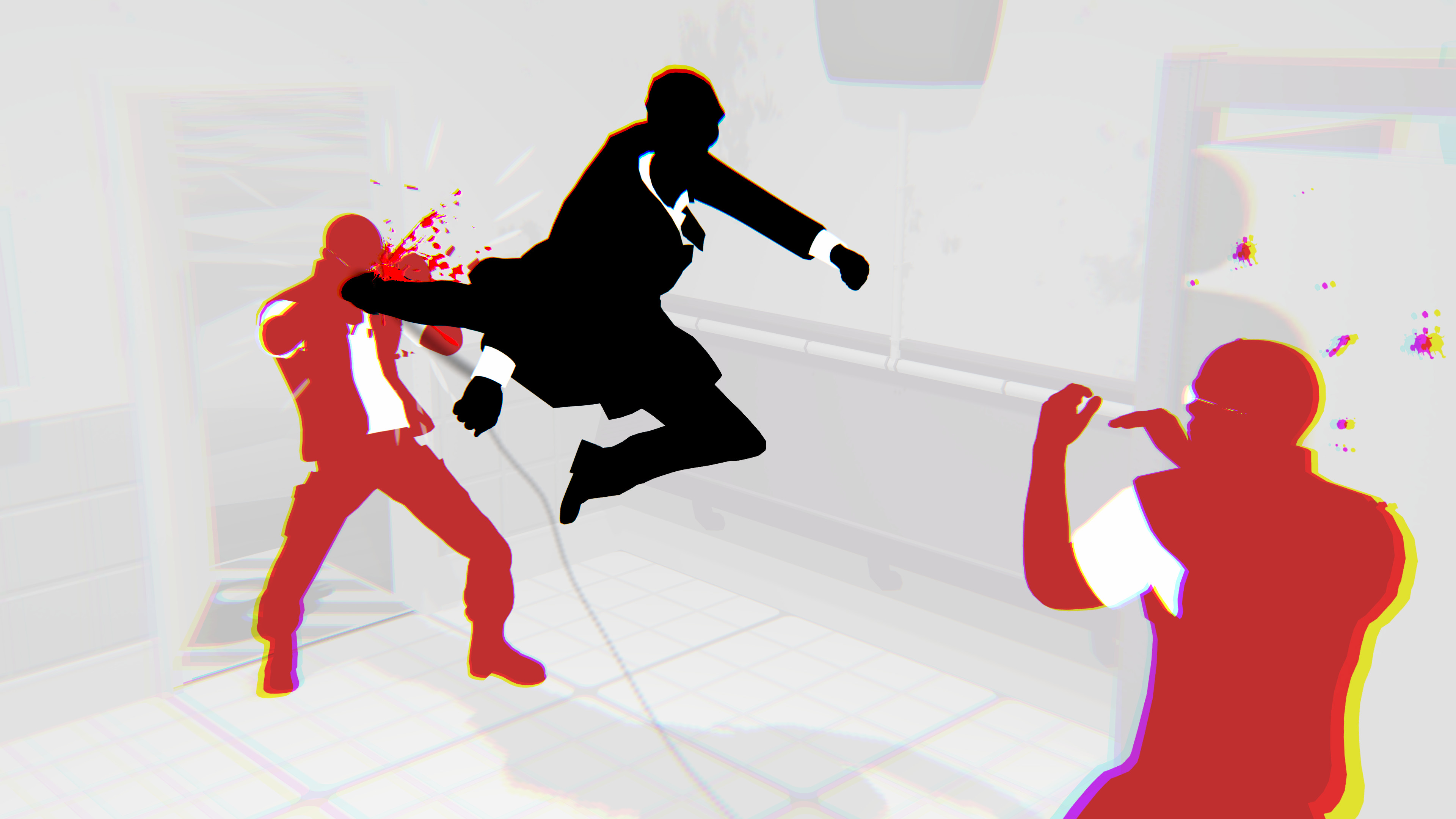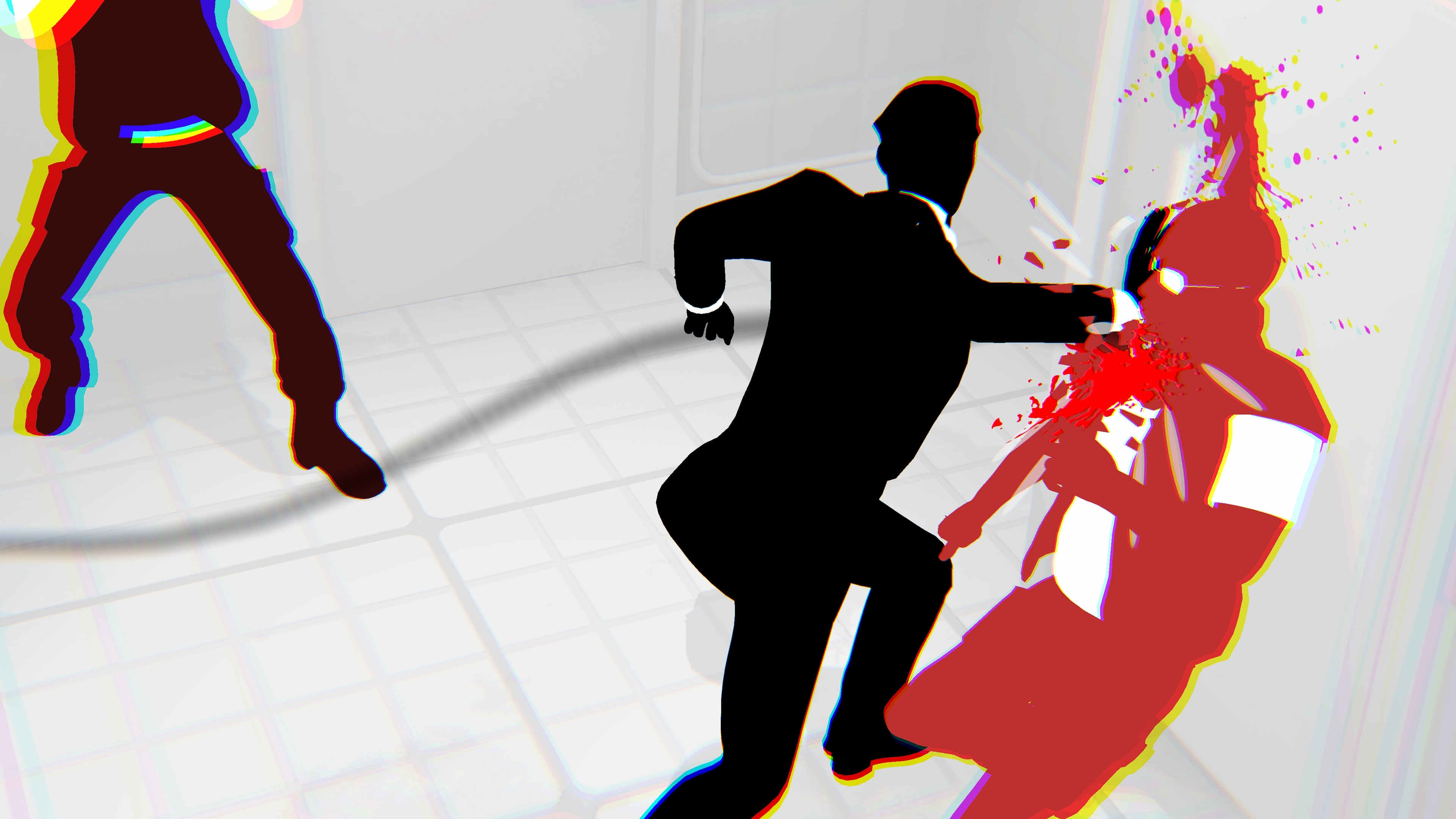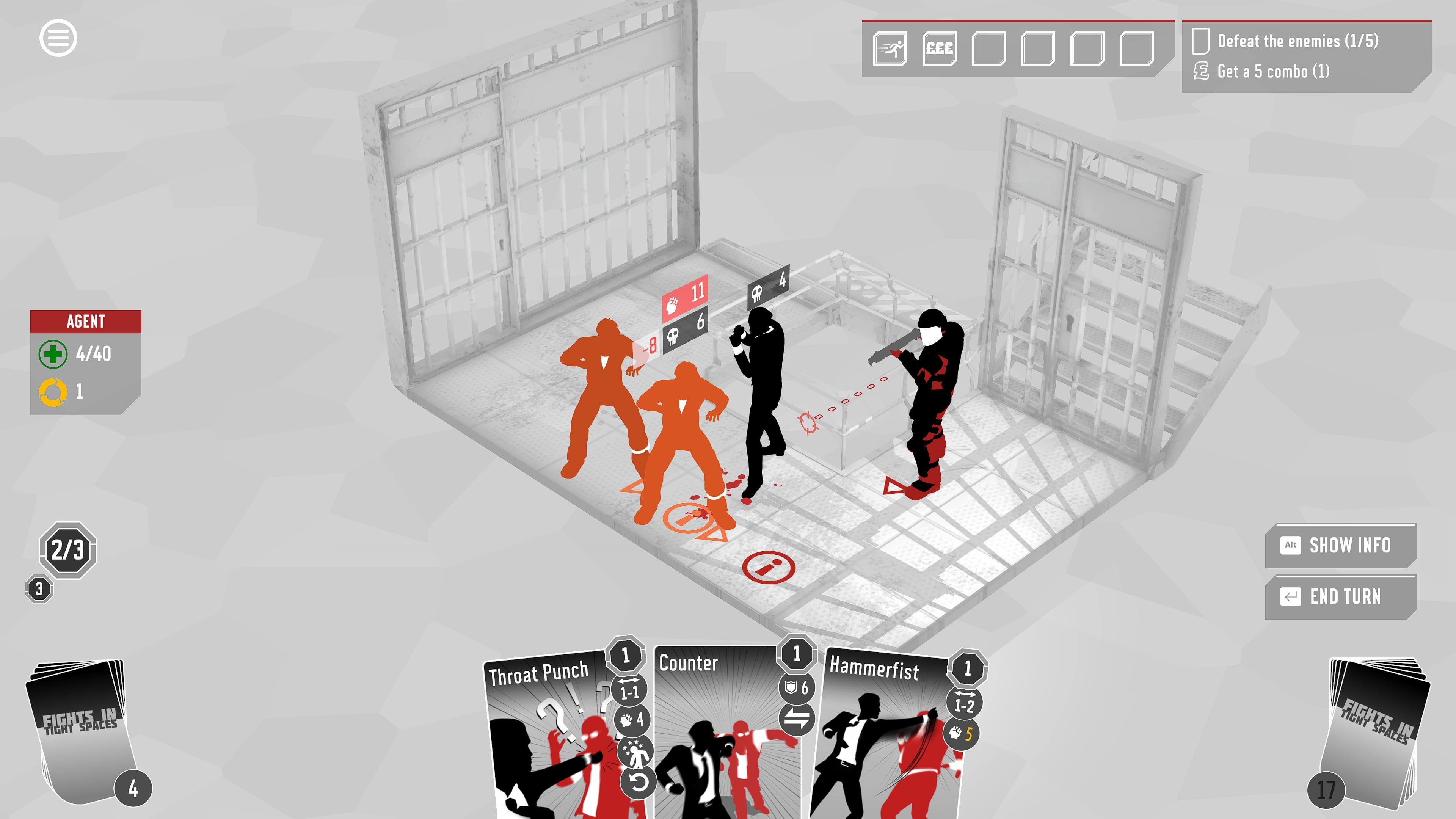Beat the holy hell out of goons as a slick-suited agent in deckbuilder Fights in Tight Spaces
Finally, a game to make Jason Statham proud.

This preview was originally released in PC Gamer issue #353 back in January. You can order PC Gamer directly from Magazines Direct or purchase a subscription to save yourself some cash.
Agent 11 is the kind of person who smooths back his hair at the start of a brawl, straightens his tie before breaking a nose with the flat of his hand. You never actually see his face, but from the way he bobs around, the man seems very happy in his work as he crushes windpipes, stomps on faces and cracks skulls against countertops.
If that brings to mind a certain another numerically-monikered agent, well, he’s certainly in the mix – especially Daniel Craig’s take on Bond as a brutal besuited psychopath. But the star of Fights in Tight Spaces is also John Wick, Henry Cavill reloading his arms, and every single character Jason Statham has ever played.
“When we first started, I got Connie [Duffy], who does our video editing, to put together a big folder of scenes clipped out of films,” lead designer James Parker says. “The elevator fight scene from Captain America, the corridor fight from Old Boy, the bathroom fight from Mission: Impossible – all these scenes that capture people’s imaginations.”
This is not exactly an unusual mix of reference points for a videogame, admittedly. But Fights in Tight Spaces isn’t an action game. It’s a mix of roguelike, deckbuilder, and turn-based tactics. Parker is upfront about his influences here, too, “The games I’d been playing a lot around the time were Slay the Spire and Into the Breach.” If you can hold those two games in your head, and splice them with The Stath’s back catalogue, you’re most of the way to imagining Fights in Tight Spaces.
Each fight plays out on a (tight, natch) grid. You’re surrounded by the usual selection of thugs, goons and henchmen, who break the old cinematic rule to mob you all at once – but luckily, they’re slow to act. That gives you a turn to get yourself out of danger, dispatching as many of them as you can along the way. And the stunts you’re going to be using to achieve this? Well, that’s what your deck is for.
A standard hand of cards might include a block, a dodging manoeuvre or two, and a nice little selection pack of kicks and punches. So you knife past this enforcer, then shoulder-barge him into the path of a gunman, before turning to deliver a roundhouse to another lad with a blowtorch. End turn, and their choreographed moves all play out, and your first victim takes a bullet to the head from his former pal. And a great big smile breaks out from across your face.
Keep up to date with the most important stories and the best deals, as picked by the PC Gamer team.
Die Hard
Fights in Tight Spaces isn’t just a game inspired by action heroes. It tries to force you to play like one – taking out foes with style. “Dodging is cool when it means you force someone with a gun to shoot his mate in the head. Getting out of the way when you’ve only got a bit of health left, and you want a breather, that’s thematically appropriate,” Parker says. “But we don’t want the best tactic to be just getting out of the way, because that’s not particularly empowering. It doesn’t make you feel like a cool action hero, it makes you feel a bit like a wimp.”
Enter the game’s combo system, designed to encourage more aggressive play. Every successful attack causes the combo meter to tick up, boosting the damage on some attacks and unlocking powerful finishing moves that can only be played when the combo hits a certain number. For every square you move, though, it chips away at your current combo. So ideally, you don’t want to be dodging in and out of enemies’ attacks – you want to move them around you, like the river flows around the stone.
Even I struggle to play it quite a lot of the time. If someone like me can’t play it, then we probably need to tailor it for a wider range of players.
James Parker, lead designer
This balance is one that Parker and his team at Ground Shatter are still trying to find themselves. For my money, staying in one place is currently too risky. The rhythm of these fight scenes requires the hero to be taking hits, and Agent 11 is made of glass. Blocking can be effective, but it never feels quite right, especially when the guns come out – and besides, one small miscalculation and you’re a step closer to permadeath. Healing is a rare treat, even by comparison to Slay the Spire, and I often found myself preferring the wimpier option.
“At the moment, we are pretty unfair on the player,” Parker admits. To date, the game has relied on a group of testers, and their tastes run a little masochistic. “Even I struggle to play it quite a lot of the time,” he says. “If someone like me can’t play it, then we probably need to tailor it for a wider range of players.”
This is beginning to change, though. The game was (technically) a launch title for Xbox Series X & S, via Microsoft’s Game Preview programme, helping to gradually expand the player base ahead of its PC Early Access launch. In case you’re wondering which flavour of Early Access we’re talking about here (other varieties including: ‘basically complete’, ‘barely left the programmer’s keyboard’, and ‘hugely overambitious mess’), Fights in Tight Spaces is one of those where the core loop is already solid, but the shape of the game around it is still wobbly. Kind of like those Ben & Jerry’s tubs with the lump of frozen cookie dough in the middle.

Mission: Impossible?
To use a non-ice-cream-based example: there’s currently no persistent progression in the game. When a run ends, you’re kicked back to the start menu, with no dopamine-loosening level-up bar ticking up or fresh unlockables to take into the next. This isn’t down to Parker being some kind of roguelike puritan – he just doesn’t know which bits to lock off yet. “Knowing what’s going to be both worthwhile enough to give players as a reward, but also not so important that they’ll miss it if they don’t have it, it’s quite a fine line to draw,” he says. “That’s going to be a thing that comes further down the line.”
Knowing what’s going to be both worthwhile enough to give players as a reward, but also not so important that they’ll miss it if they don’t have it, it’s quite a fine line to draw.
James Parker, lead designer
This is a smart approach, although does mean Fights in Tight Spaces will probably be the rare game that slims down in its time during Early Access – at least, the first-run version of it. But Parker, aware of the deep card pools offered by the competition, wants to keep it growing too. “We can’t come out the gate saying ‘well, we’re a small new game so we’ve only got ten cards’, that’s never going to wash,” he says – and Parker is constantly thinking of new mechanics and new ways to bend the existing ones. “Every time I take a break from putting in new cards, when I come back to it, I’ll realise: oh, there’s a whole kind of suite of things that I haven’t considered yet that we can do.”
There are a couple of complications, though, that make implementing these ideas trickier than Slay the Spire’s ‘here’s some scribbled MS Paint card art while we test it out’ approach. “Unlike the majority of deckbuilding card games, we have that full 3D physicality where everything is animated. So there’s a lot of content to create, and it has to look amazing.” Which is where those action-movie sizzle reels come back into play, along with YouTube videos of martial artists doing the same move over and over – perfect reference material for an animator.

The second complication stems right from that action-movie theming. “If we had wizards in the game, it would make life so much easier for me,” he says. “Then you can have a spell where a plant comes out of the ground on the other side of the game board and sucks someone underground.” Because of its theme, the game can’t rely on this kind of abstraction. Every move has to be grounded in reality (the movie version, at least) and expressed through Agent 11’s movements.
So, I ask Parker, why make it harder for yourself? “A lot of those card games don’t personally appeal to me, thematically speaking. I’m not really a fantasy fan, those worlds don’t interest me particularly.” The action-movie thing isn’t just an affectation for Parker, it’s a genuine passion – his office is more ‘Jason Statham mugs’ than ‘Lord of the Rings posters’, as he puts it.
This brings a lot of challenges when you’re making a card game, but also has potential to open (or rather, kick down) a new door, he reckons “to find other people like me for whom something like Monster Train or whatever is not quite visually, or thematically, the thing they’re after”. The kind of person who can appreciate a good cracked skull or crushed windpipe, and understands the value of being immaculately dressed while you do it.



